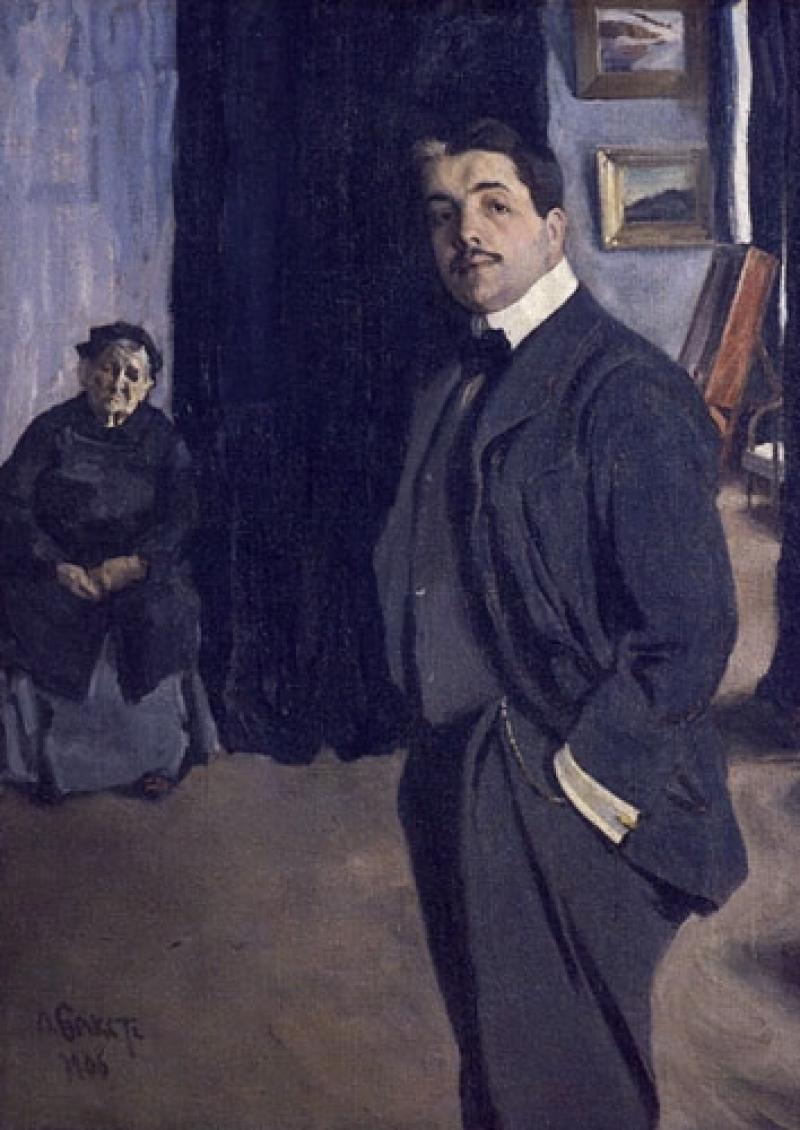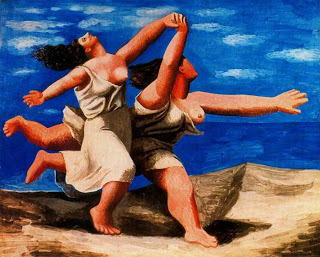theartsdesk in Moscow: Diaghilev comes home | reviews, news & interviews
theartsdesk in Moscow: Diaghilev comes home
theartsdesk in Moscow: Diaghilev comes home
Russia reappraises its prodigal son

Was he the prodigal son who abandoned Russia? Or the figure who did more than anyone to integrate Russian and European culture in the first half of the last century? As two major exhibitions open on the heritage of Sergei Diaghilev, celebrated impresario and “20th-century Medici”, for the first time Russians will have the chance to decide for themselves.
It is the centenary of the first performances by the Ballets Russes in Paris, as well as the 80th anniversary of the death of the company’s no less legendary founder, and exhibitions marking his extraordinary creative achievements have been on display around the world this year. But next month finds two much awaited shows opening in Diaghilev’s native Russia. Russia’s cultural community being as gossipy and insiderish as any in the world – some would say, rather more so – anticipation will continue to rise until they are both unveiled.
One, at St Petersburg’s Russian Museum, concentrates more on Russian artists from the earlier period of Diaghilev’s creative life in that city. At least for Russians, the show at the Tretyakov Gallery in Moscow will be the more revelatory. It will show the fruits of his collaboration with major European artists across the first three decades of last century – not to mention those of his compatriots who joined him in Europe, fated never to return to Russia after the revolution.
The list of Diaghilev’s collaborators reads like a roll-call of the great names of Russian and/or modernist culture, spanning Diaghilev’s presiding influence on the visual arts, music and dance alike. Artists include, from Russia, Mikhail Larionov, Natalya Goncharova, Alexandre Benois and Leon Bakst, who famously painted Diaghilev with his nanny (main image); in Europe he encountered Picasso, Matisse, de Chirico, Derain, Gris and Braque. Among the composers he worked with are Stravinsky and Prokofiev, as well as Ravel, Satie, Poulenc and Richard Strauss. His associates in ballet include Nijinsky, Tamara Karsavina and Anna Pavlova. And that’s before his creative heritage is factored in – George Balanchine in America, Ninette de Valois and Marie Rambert in London. By any reckoning it’s a unique enough address book, extraordinary testament to a character whose chief gift, aside from deep knowledge of several art forms, was to identify talent at an early age, and then use the best collaborators to nurse it to fruition. The fact that Diaghilev's projects almost never lost money, and were almost always brought to completion, only adds to his lustre.
By any reckoning it’s a unique enough address book, extraordinary testament to a character whose chief gift, aside from deep knowledge of several art forms, was to identify talent at an early age, and then use the best collaborators to nurse it to fruition. The fact that Diaghilev's projects almost never lost money, and were almost always brought to completion, only adds to his lustre.
Geographical dispersal of the heritage will give the Tretyakov’s show of more than 500 works a once-in-a-lifetime flavour. Irina Shumanova, a youthful, energetic figure who is its curator, advises that the exhibits are drawn from 10 museum collections and as many private collections. Assembling it was not made easier by the plethora of other international shows on Diaghilev across the year. The Tretyakov has also had to compete for access to graphics and original costumes which cannot be displayed for much longer than three months, the duration of the Moscow show.
The global footprint of Diaghilev’s legacy is truly remarkable. Many of the impresario’s effects were handed out piecemeal to artists and performers over the 20-year lifespan of the Ballets Russes. The Victoria and Albert Museum contributes Picasso’s design for The Blue Train (pictured above), which will be seen for the first time in Russia. Somewhat improbably, the Wadsworth Atheneum in Hartford, Connecticut became one of the very earliest collectors thanks to the enthusiasm of a director who saw the Ballets Russes when they toured there in 1916. Monaco, a frequent location for company rehearsals, gives generously, as does Stockholm’s Dance Museum. While it’s no surprise that Russian collections offer less from the Ballets Russes years, the Tretyakov owns the greater part of Larionov’s archive, bequeathed after the death of his second wife. Larionov was also himself a historian of the company.
In a nod to Diaghilev’s commitment to the modernist project, the show dedicated to his work will not be housed in the Tretyakov’s rather pompous 19th-century main building, but its more prosaic second home on the banks of the Moscow river. Its resemblance to a 1960s aircraft hangar is entirely in the eye of the beholder.
Not that he was a pariah in the Soviet Union, as the myth suggests. There were many attempts from the Soviet side to bring Diaghilev’s company back to perform in the early 1920s
It will drag Diaghilev even further into the present. Unprecedentedly for an institution with something of a conservative reputation, 3D installations will reconstruct old performances. This is the closest anyone will get to experiencing a Ballets Russes production onstage. Diaghilev was opposed to filming the work, in the belief that limitations on colour and sound did no justice to the essential experience that captivated international audiences.
The exhibition will highlight the many differences in artistic practice between Russia and western Europe. An intriguing example which Shumanova mentions is in stage design. The Russian theatrical tradition tended to see each sketch as a work of art in itself. For European artists, sketches were just that - a quick draft to be worked up with designers in the process of creation. That seems a crucial key to Diaghilev’s unmatched legacy – the successful intermingling of disparate cultures to achieve the highest artistic ends.
Not that he was a pariah in the Soviet Union, as the myth suggests. There were many attempts from the Soviet side to bring Diaghilev’s company back to perform in the early 1920s. The fact that they locked his brother up in a Soviet prison applied that extra twist of the thumbscrew. All overtures came to nothing.
Perhaps Moscow (indeed, Russia itself) said its symbolic farewell to Diaghilev at a dinner in the Metropol hotel in March 1905. Restaurants don’t come much grander. The soirée was a memorial partly to the revolutionary World of Art magazine founded by Diaghilev in 1899; it ceased publication not for financial reasons, but because its organisers and contributors believed it had run its course. The dinner was also to celebrate a exhibition of Russian portraiture prodigiously curated by Diaghilev in the Tauride Palace in St Petersburg. The show brought together more than 4,000 works, fruit of a year’s journey around the country’s distant regions. They don’t make curators like that any more.
But the winds of change, political and artistic, were already in the air. Diaghilev’s own toast that night was both elegiac and prescient. “I raise my glass,” he said, “for the destroyed walls of beautiful palaces as well as for the new principles of the new aesthetics”. It’s not that Diaghilev then went straight into exile: his mission was to promote Russian culture abroad. He began next year in Paris with a landmark show of Russian art, including everything from icons to the avant-garde. Only then did he create the ballet company that would bestride the two worlds.
Diaghilev’s character remains, much as Churchill famously said of Russia itself, a riddle wrapped in a mystery inside an enigma. His personal life was complicated, while his legacy to music, to ballet and to the visual arts is unquantifiable. Shumanova tells of an exchange between the impresario and the king of Spain. “Who are you?” asked the king. “Like you I do nothing,” Diaghilev is said to have replied, “but everything is impossible without me.” Russia now has its first chance to muse over the enormous achievement of that everything and nothing.
Share this article
The future of Arts Journalism
You can stop theartsdesk.com closing!
We urgently need financing to survive. Our fundraising drive has thus far raised £49,000 but we need to reach £100,000 or we will be forced to close. Please contribute here: https://gofund.me/c3f6033d
And if you can forward this information to anyone who might assist, we’d be grateful.

Subscribe to theartsdesk.com
Thank you for continuing to read our work on theartsdesk.com. For unlimited access to every article in its entirety, including our archive of more than 15,000 pieces, we're asking for £5 per month or £40 per year. We feel it's a very good deal, and hope you do too.
To take a subscription now simply click here.
And if you're looking for that extra gift for a friend or family member, why not treat them to a theartsdesk.com gift subscription?

Add comment